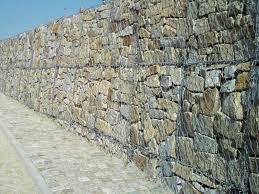Gabion design provides a flexible and efficient solution to a range of applications in both urban and rural settings. Gabions are wire mesh containers that are filled with stones. They are used primarily for erosion control wall retaining, as well as decorative elements. This article will provide a thorough overview of what you need to know concerning gabions (gabiony) designs for various settings.
1. Understanding Gabion Structures:
Gabions comprise of sturdy wire mesh cages that are filled with stones or other elements. The mesh is typically available in different forms, including round or circular shapes. Gabions are known for their permeability, flexibility and stability and are suitable for a range of applications.
2. Design Considerations for Urban Areas:
In urban environments gabions are used for a variety of purposes for the control of erosion along rivers, sound barriers, and aesthetic features in landscaping. When planning gabions for urban areas, think about the following aspects:
Design Integration: Aesthetics usually require gabions to blend seamlessly into the architecture. Choose stones and mesh colors that match your urban landscaping.
Load-Bearing Capacity: Ensure the gabion structures are constructed to handle the additional load like vehicle pressure or pedestrian traffic when used in construction projects.
Durability and Maintenance urban settings are often harsh, with pollution and heavy use affecting structures. Opt for the highest-quality, rust-resistant materials and plan for regular maintenance.
3. Design Considerations for Rural Areas:
In rural areas gabions are mostly used for practical purposes like preventing soil erosion and stabilizing slopes. Key considerations include:
Site Conditions: Rural areas often have a variety of terrain. Create gabions that are able to adapt to different terrains and soil types to effectively control water runoff and to prevent erosion.
Cost-Effectiveness: Rural construction projects might be limited by budget. Gabions provide a cost-effective solution because of their local stone sources and their relatively simple construction.
Environmental Impact: Ensure that gabion designs do not negatively impact local wildlife or ecosystems. Include natural vegetation in the area around gabion structures so that they blend into the natural landscape and to encourage the preservation of habitats.
4. Construction and Installation:
No matter where, correct installation is crucial. Gabions must be securely anchored and filled to ensure stability. A proper drainage system must be thought of to prevent the build-up of water within the gabion. This could cause structural damage.
In short, the design of gabion structures in both urban and rural areas must be considered with care aesthetics, load-bearing needs, the cost of construction, durability as well as environmental impact. When these aspects are addressed the gabion structure can efficiently serve their intended purposes as well as complement their surroundings.

